Methods for fertilizing seedlings with iodine
Iodine is an element that is vital for all living things on earth. It can be used not only for medical purposes, but also for processing various vegetable and ornamental crops: strawberries, peppers, tomatoes, cucumbers, and home flowers. What effect does this element have on plants and how to prepare an iodine solution for fertilization correctly?
The use of iodine
Like any other trace element, iodine is directly involved in biological processes. It is found in sufficient quantities in black soil, chestnut, floodplain soils. But salt marshes, podzolic, sierozem soils, as a rule, are deficient.
For normal growth and development of a plant, microscopic doses of iodine are needed. Therefore, such fertilizer for agriculture is not produced separately. However, it is contained in phosphate rock (from 150 to 280 thousand mg per kg). There is also a lot of it in manure, ash.
You can prepare the iodine solution yourself. It is used for the following purposes:
- to stimulate seed growth;
- against fungal diseases of cultivated plants;
- to increase the immunity of seedlings;
- to increase productivity.
It should be noted that fertilization of seedlings with iodine solution has a beneficial effect on human health. Fruits grown with iodine supplements contain a sufficient amount of a trace element, which is also important.
Processing methods
You can fertilize with iodine not only the roots of the plant, but also its seeds and leaves. Depending on the culture being processed, the purpose of iodine, the recipe may differ slightly.
- Seed treatment is carried out immediately before sowing. First, they are soaked for 6 hours with preparations containing iodine (0.1% sodium iodide or potassium iodide solution). To prepare such a solution at home, you need to dissolve 1 drop of iodine in one liter of water
- Root treatment is carried out by watering the plant. To prepare the solution, you need only 1 drop per 3 liters of water. The resulting composition can be watered all the seedlings. Sometimes it is enough to perform the procedure once for the plants to receive the required amount of the element.
- Foliar treatment, or simply spraying plants with an iodine solution, is performed during the growing season. This method helps to destroy the spores of downy mildew, copes well with late blight.
Preparation of iodine feeding for different crops
When growing seedlings of cucumbers, tomatoes and pepper dressing iodine is especially relevant. Also, gardeners often use it to fertilize strawberries, strawberries, and home flowers. Let's consider each case separately:
- Top dressing for cucumbers.
This culture has a very common disease with powdery mildew. To get rid of it, the seedlings of cucumbers and the soil around are sprayed with a special solution. To prepare it, you need to mix 3 liters of water, 350 ml of milk, 4 drops of iodine. After transplanting to a new place, cucumbers are processed by spraying the seedlings with a mixture of 10 liters of water, 1 liter of milk and 10 drops of a 5% aqueous-alcoholic tincture. The procedure is repeated every 10 days. This treatment prevents yellowing of the leaves and "rejuvenates" the weaving part of the cucumbers. It is good as a preventive measure against fungal spores.
- Fertilizing tomatoes and peppers.
Tomatoes and peppers are processed from seed. They are filled with 0.1% iodine solution for 6 hours. Thanks to this care, the seeds germinate faster, the seedlings are strong and healthy.At the next stage, when the tomato and pepper release two real leaves, root feeding of the seedlings is carried out (1 drop of 5% iodine tincture per three liters of water). Fertilization of tomatoes is carried out after planting seedlings in the ground, as soon as the brush begins to tie. To do this, add 3 drops of iodine to a bucket of water and pour about 1 liter of solution onto the roots of each plant. As practice shows, after such fertilizer tomato and the pepper grows 15-20% more than usual (meaning the fruit). In addition, the plant resists diseases better, the ripening time of tomatoes and sweet peppers is significantly reduced.
To treat a tomato from late blight, the following recipe is used: 1 liter of whey, 40 drops of iodine tincture and a spoonful of hydrogen peroxide are poured into a bucket of water. The resulting solution is abundantly sprayed with seedlings.
There is another recipe, it makes tomato seedlings more resistant to late blight. You need to boil 8 liters of water, add 2 liters of sifted ash powder and mix thoroughly. When the substance cools down, a vial of iodine is poured into it and 10 g of boric acid is poured into it. Then the mixture is infused for 12 hours. Water the tomato at the root, after diluting the infusion at the rate of 1 liter per bucket of water. The composition of such a solution is rich in trace elements, so it can be used as the main top dressing for tomatoes.
Advice
When feeding plants, follow the recipe exactly, otherwise too high iodine content can disrupt the process of brush formation, the fruits will grow crooked.
- Home flowers processing.
For indoor plants, prepare your own solution: add 1-2 drops of 5% iodine tincture to 2 liters of water. You need to water the soil, not the roots, otherwise the iodine can simply burn them. Such feeding will ensure rapid plant growth, frequent flowering, and good immunity. Also, iodine solution can be used to combat powdery mildew on gloxinia and violets. To do this, add 30 drops of alcoholic tincture per liter of boiled water, spray the plant, and then put it in a dark place to dry.
- Feeding strawberries.
Watering with medicinal composition of plantings of strawberries and wild strawberries is carried out, as a rule, in early spring. To prepare the solution, use 10 drops of an aqueous-alcoholic solution of iodine, diluted in 10 liters of water. You need to water the plants 3 times every 10 days, while the container should be plastic, not metal. This helps to avoid the development of gray rot, strengthens plant immunity.
Iodine deficiency negatively affects the health of people, animals and plants. That is why the UK, USA, Germany, as well as a number of other developed countries at the state level are seeking to actually increase its consumption by the population. The ability of the element to accumulate in soil and plants makes it possible to increase its content in vegetables and fruits.
The second undoubted advantage of iodine fertilization is an increase in the yield of tomatoes, cucumbers, peppers, and other crops. As the experience of many gardeners shows, such feeding is really effective, you just need to correctly calculate the required amount of iodine and water the plants in a timely manner.
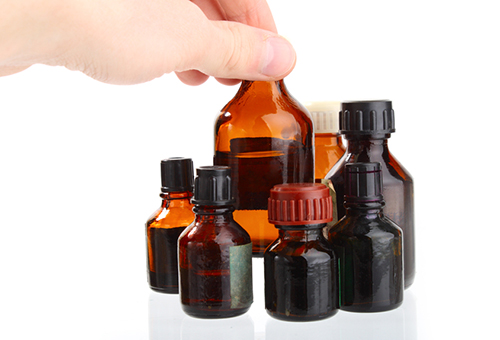
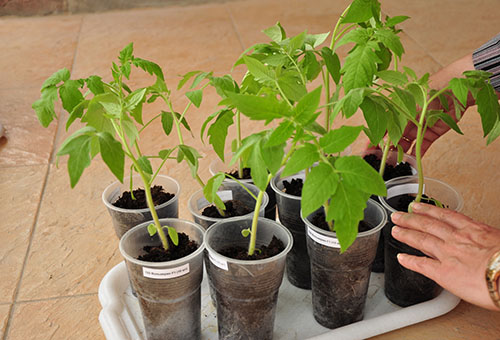
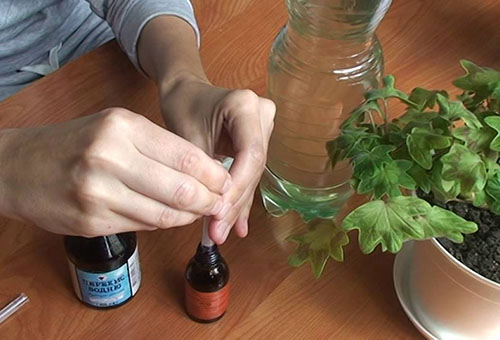
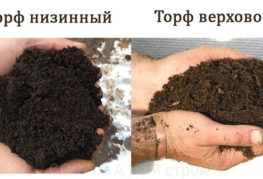

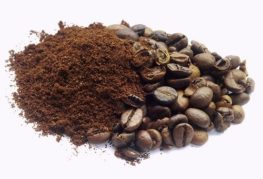
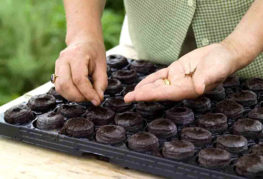
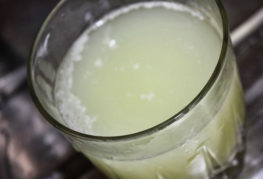
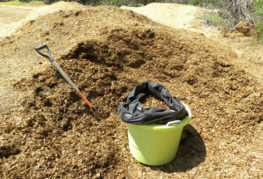
Why do the leaves of tomato seedlings wither